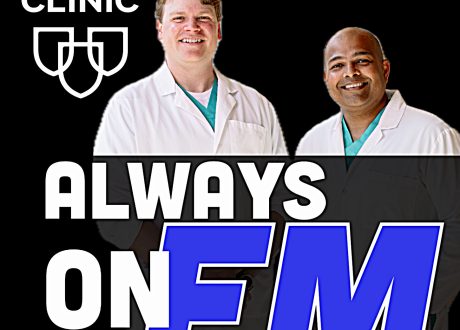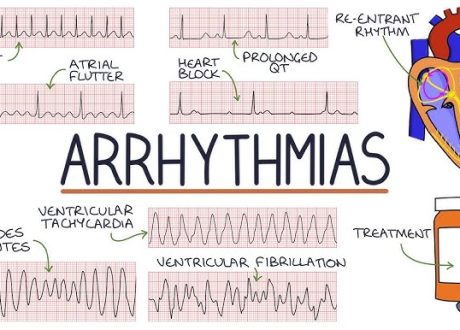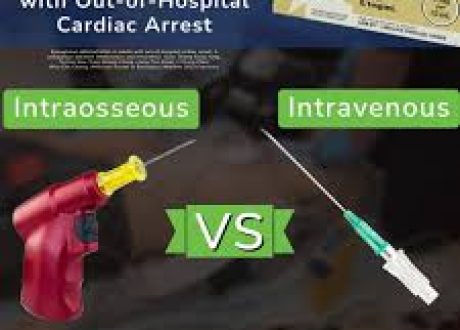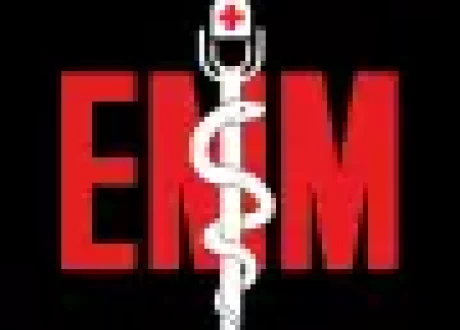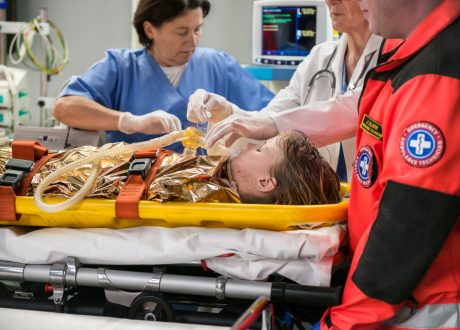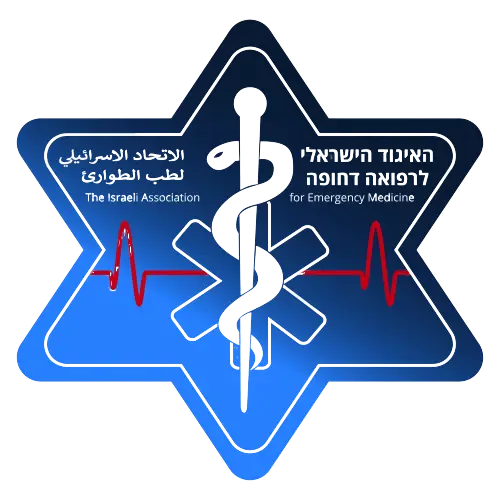פרסום זה חשוב מאד
Sections
- 1. Introduction
- 2. Scope of Practice
- 3. Training and Proficiency
- 4.Hospital Credentialing and Privileging
- 5. Specialty Certification
- 6. Quality and Ultrasound Management
- 7. Value and Reimbursement
- 8. Clinical Ultrasound Leadership in Health Care Systems
- 9. Future Issues
- 10. Conclusion
Tables
- 1. Emergency Medicine Ultrasound Definitions
Figures
- 1. ACEP 2023 Emergency Ultrasound Scope of Practice
- 2. Pathways for Clinical Ultrasound Training, Credentialing, and Incorporation of New Applications
- 3. Clinical Ultrasound Workflow
Appendices
- 1. Evidence for Core Emergency Ultrasound Applications
- 2. Evidence for Advanced Emergency Ultrasound Applications
- 3. Emergency Ultrasound Learning Objectives
- 4. Recommendations for Emergency Medicine Residency EUS Education Program
- 5. Recommendations for EUS Course
- 6. Ultrasound in UME—Medical School Rotation and Curriculum
Section 1—Introduction
Clinical ultrasound (CUS) has become an integral aspect of emergency care in the United States for over 2 decades. Since the last update of these guidelines in 2016, the role of ultrasound has expanded throughout clinical medicine. The wide breadth of recognized CUS applications offers both diagnostic and therapeutic benefits to patients around the world. Benefits of bedside imaging with ultrasound include its relatively low cost, lack of ionizing radiation, portability, and ease of use. Data have demonstrated that CUS can improve diagnostic accuracy in numerous common clinical presentations, including dyspnea,1 abdominal pain,2 and joint dislocations.3 Ultrasound guidance has also been incorporated into bedside procedures, improving success and decreasing inadvertent complications.4, 5, 6
Emergency physicians have been leaders in innovation and education in the CUS space both nationally and internationally. This has led to increased integration and improved standardization at the undergraduate, postgraduate, and continuing medical education levels. Emergency medicine leaders have also leveraged their extensive knowledge and teaching to educate other specialties seeking to enhance their ultrasound training and expertise. Specifically, CUS curricula in undergraduate medical education are growing exponentially because of the leadership and advocacy of emergency physicians, integrating CUS into the education of the next generation of clinicians. In fact, CUS in emergency medicine residency training has been codified in the Model of the Clinical Practice of Emergency Medicine, a joint policy collaboration between 7 organizations. Moreover, CUS fellowship has advanced, with fellowships now eligible for accreditation by the Emergency Ultrasound Fellowship Accreditation Council (EUFAC) and fellowship graduates being recognized with certification as a focused practice designation by American Board of Emergency Medicine (ABEM). Leaders in CUS have created the foundation of a subspecialty of ultrasonography that provides the expertise for establishing clinical practice, educating across the educational spectrum, and researching a wide range of applications. The CUS leaders have also become instrumental in bringing health care systems into the future through championing and often running system-wide programs. As CUS continues to evolve and access to ultrasound machines becomes increasingly widespread, it is critical to understand the current field and provide national guidelines to inform education and practice. This guideline update is intended to provide a framework for new and established programs using CUS.
Section 2—Scope of Practice
Clinical ultrasound is the medical use of ultrasound technology for the bedside clinical evaluation of acute or critical medical conditions.7 It is used for diagnosis of any emergency condition, such as the resuscitation of the critically ill patient, during guidance of procedures, and monitoring of certain pathologic states. The CUS examinations are typically performed and interpreted by emergency physicians or those under the supervision of emergency physicians in the setting of the emergency department or a non-ED emergency setting hospital unit (out-of-hospital, battlefield, space, urgent care, clinic, remote, or other settings). It may be performed as a single examination, repeated serially based on clinical need or patient deterioration or used for monitoring of physiologic or pathologic changes.
In this document, CUS refers to ultrasound performed by emergency physicians or clinicians in the emergency setting, whereas point-of-care ultrasound (POCUS) refers to a multidisciplinary field of ultrasound use by clinicians at the point-of-care.8 Table 1 summarizes relevant ultrasound definitions in CUS.
Table 1. Emergency medicine ultrasound definitions.
| Advanced Emergency Medicine Ultrasonography (AEMUS) | Ultrasound by emergency physicians with advanced training. This term is used by the American Board of Emergency Medicine Focused Practice Designation. |
| Focused Practice Designation (FPD) | A pathway created by the American Board of Medicine Specialties to recognize advanced training. The pathway is specialty-specific and applies to advanced knowledge in an area. The American Board of Emergency Medicine offers an FPD in AEMUS. |
| Point-of-Care Ultrasound (POCUS) | Ultrasound performed by clinicians at the patient’s bedside that answers a specific clinical question. There are many somewhat synonymous terms for ultrasound performed by emergency physicians at the patient’s bedside. |
| Emergency Ultrasound | Ultrasound performed and interpreted by the clinician as an emergency procedure and directly integrated into the care of the patient. There are many somewhat synonymous terms for ultrasound performed by emergency physicians at the patient’s bedside. |
| Educational Ultrasound | Ultrasound performed on a patient, volunteer, or in simulation that is not intended to provide information to further the clinical care of that individual. |
| Consultative Ultrasound | Ultrasound performed by nonemergency medicine specialists at the request of an emergency physician. This ultrasound is generally distinct from emergency ultrasound in its scope (less narrow) and purpose (diagnostic question that can wait for a consultant). |
| Resuscitative Ultrasound | Ultrasound use directly related to cardiac resuscitation (ACLS), general medical resuscitation (eg, sepsis), or resuscitation from unknown causes. |
| Diagnostic Ultrasound | Ultrasound use in a diagnostic imaging capacity. Some diagnostic ultrasounds are performed in series to monitor physiologic changes. |
| Sign- or Symptom-Based Ultrasound | Ultrasound used in a clinical pathway based on the patient’s symptoms or signs (eg, shortness of breath). |
| Therapeutic Ultrasound | Ultrasound use as part of therapy for patient care. |
| Ultrasound-Guided Procedure | Ultrasound to guide a procedure in real time. |
| Ultrasound-Assisted Procedure | Ultrasound used to assist with a procedure that is not performed in real time (eg, preprocedural identification). |
| Limited Ultrasound | Ultrasound imaging of an organ or organ system that is not comprehensive. This term is used to represent a level of US for coding and billing. Limited ultrasounds are sometimes confused with incomplete ultrasound where a complete set of needed images are not recorded or performed. |
Other medical specialties may wish to use this document if they perform CUS in the manner described above. However, guidelines that apply to ultrasound examinations or procedures performed by consultants, especially consultative imaging in ultrasound laboratories or departments or in alternative settings, may not be applicable to emergency physicians.
Emergency ultrasound (EUS) is an emergency medicine procedure and should not be considered in conflict with exclusive “imaging” contracts that may be in place with consultative ultrasound practices. In addition, EUS should be reimbursed as a separate billable procedure.9 (See Section 7—Value and Reimbursement.)
The CUS is a separate entity distinct from the physical examination that adds anatomic, functional, and physiologic information to the care of the acutely ill patient.10 It provides clinically significant data not obtainable by inspection, palpation, auscultation, or other components of the physical examination.11 The ultrasound used in this clinical context is also not equivalent to use in the training of medical students and other clinicians in training looking to improve their understanding of anatomic and physiologic relationships of organ systems.
The CUS can be classified into the following functional clinical categories:- 1.
Resuscitative: ultrasound use directly related to an acute resuscitation
- 2.
Diagnostic: ultrasound used in an emergency diagnostic imaging capacity
- 3.
Symptom or sign-based: ultrasound used in a clinical pathway based on the patient’s symptom or sign (eg, shortness of breath)
- 4.
Procedure guidance: ultrasound used as an aid to guide a procedure
- 5.
Therapeutic and Monitoring: ultrasound use in therapeutics or in physiological monitoring
Within these broad functional categories of use, 15 core emergency ultrasound applications have been identified as Aorta, Bowel, Cardiac/Hemodynamic assessment, Deep Venous Thrombosis (DVT), Hepatobiliary, Musculoskeletal (MSK), Ocular, Pregnancy, Procedural Guidance, Skin and Soft-tissue, Testicular, Thoracic/Airway, Trauma, Ultrasound-Guided Nerve Blocks, and Urinary Tract. Evidence for these core applications may be found in Appendix 1. The criteria for a core application are widespread use, significant evidence base, uniqueness in diagnosis or decisionmaking, importance in primary emergency diagnosis and patient care, or technological advance.
Alternatively, symptom and sign-based ultrasound pathways, such as Shock or Dyspnea, may be considered an integrated application based on the skills required in the pathway. In such pathways, applications may be mixed and used in a format and order that maximizes medical decisionmaking, outcomes, efficiency, and patient safety tailored to the setting, resources, and patient characteristics. See Figure 1.

Figure 1. The ACEP 2023 Emergency Ultrasound Guidelines scope of practice.
Emergency physicians should have a basic education in ultrasound physics, knobology, instrumentation procedural guidance, and Focused Assessment with Sonography in Trauma (FAST) as part of emergency medicine practice. It is not mandatory that every clinician performing EUS examinations use or be an expert in each core application, but it is understood that each core application is incorporated into common EUS practice nationwide. The descriptions of these examinations may be found in the American College of Emergency Physicians (ACEP) policy, Emergency Ultrasound Imaging Criteria Compendium.12 Many other ultrasound applications or advanced uses of these applications may be used by emergency physicians. Their noninclusion as a core application does not diminish their importance in practice nor imply that emergency physicians are unable to use them in patient care.
Each EUS application represents a clinical bedside skill that can be of great advantage in a variety of emergency patient care settings. In classifying an emergency ultrasound, a single application may appear in more than one category and clinical setting. For example, focused cardiac ultrasound may be used to identify a pericardial effusion in the diagnosis of an enlarged heart on a chest radiograph. The focused cardiac ultrasound may be used in a cardiac resuscitation setting to differentiate true pulseless electrical activity from profound hypovolemia. The focused cardiac US can be used to monitor the heart during resuscitation in response to fluids or medications. If the patient is in cardiac tamponade, the cardiac ultrasound can also be used to guide a pericardiocentesis. In addition, the same focused cardiac study can be combined with one or more additional emergency ultrasound types, such as the focused abdominal, the focused aortic, or the focused chest/thoracic ultrasound, into a clinical algorithm for an undifferentiated hypotensive patient. See Figure 1.
Ultrasound guidance provides added safety to a wide variety of procedures ranging from vascular access (eg, central venous access) to drainage procedures (eg, thoracentesis pericardiocentesis, paracentesis, arthrocentesis) to localization procedures like ultrasound-guided nerve blocks. These procedures may provide additional benefits by increasing patient safety and helping alleviate acute pain.
Other ultrasound applications are performed by emergency physicians and may be integrated depending on the setting, training, and needs of that particular ED or emergency medicine group.
Other Settings or Populations
Pediatrics
Clinical ultrasound is a particularly advantageous diagnostic tool in the management of pediatric patients in whom radiation exposure is a significant concern. The CUS applications, such as musculoskeletal evaluation for certain fractures (rib, forearm, skull) and lung for pneumonia, may be more advantageous in children than in adults because of smaller patient size and density.13 Ultrasound can be associated with increased procedural success and patient safety and decreased length of stay.14,15 Whereas most ultrasound modalities in the pediatric arena are the same as in adult patients (the Extended Focused Assessment with Sonography in Trauma [EFAST] examination, procedural guidance), other modalities are unique to the pediatric population, such as in suspected pyloric stenosis and intussusception, or in the child with hip pain or a limp).16, 17, 18 Mostly recently, EUS has been formally incorporated into Pediatric Emergency Medicine fellowship training.19,20
Critical Care
The CUS core applications are being integrated into cardiopulmonary resuscitations and noninvasive hemodynamic monitoring in critical care scenarios.21,22 Dual-trained physicians in emergency medicine and critical care are leading the application, education, and research of ultrasound for critically ill patients and have significant leadership in advancing ultrasound concepts in multidisciplinary critical care practice. Advanced cardiopulmonary ultrasound applications are being integrated into critical care practice.
Prehospital
There is increasing evidence that CUS has an increasing role in out-of-hospital emergency care.23,24 Challenges to the widespread implementation of out-of-hospital ultrasound include significant training and equipment requirements and the need for oversight and quality assurance. Studies focusing on patient outcomes need to be conducted to further define the role of out-of-hospital CUS and to identify settings where the benefit to the patient justifies the investment of resources necessary to implement such a program.25
International arena including field, remote, rural, global public health, and disaster situations
Ultrasound has become the primary initial imaging modality in disaster care.26, 27, 28, 29, 30 Ultrasound can direct and optimize patient care in natural disasters such as tsunami, hurricane, famine, or man-made disasters such as battlefield or refugee camps. Ultrasound allows for imaging in remote locations such as rural areas, developing countries, or small villages, which often do not have other imaging options (eg, radiograph, computed tomography [CT], magnetic resonance imaging [MRI]), unreliable electrical supplies, and less experienced clinicians. Ultrasound in outer space is often the only imaging modality for space exploration and missions.31,32 Ultrasound has also been used in remote settings such as international exploration, mountain base camps, and cruise ships.23 The increasing portability of ultrasound machines and the development of handheld devices with improving image resolution has expanded the use of emergent imaging in such settings.
Military and Tactical
The military has embraced the use of ultrasound technology in austere battlefield environments.33,34 It is now routine for combat support hospitals and forward surgical teams to deploy with next generation portable ultrasonography equipment. Clinical ultrasonography is often used to inform decisions on the mobilization of casualities to higher echelons of care and justify the use of limited resources. Within the last decade, emergency physicians at academic military medical centers have expanded ultrasonography training to clinical personnel who practice in close proximity to the point of injury, such as combat medics, special operations forces, physician assistants, and nurse practitioners.35 The overarching goal of these training programs is to create a generation of competent clinical sonologists capable of practicing “good medicine in bad places.” The military is pursuing telemedicine-enabled ultrasound applications, automated ultrasound interpretation capabilities, and extension of clinical ultrasonography in additional areas of operation, such as critical care air evacuation platforms.36



